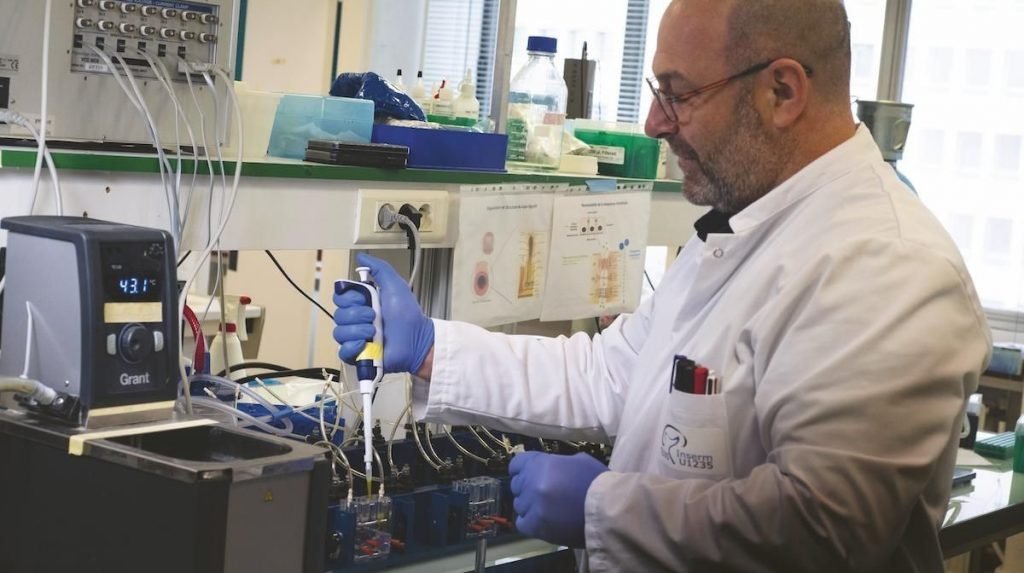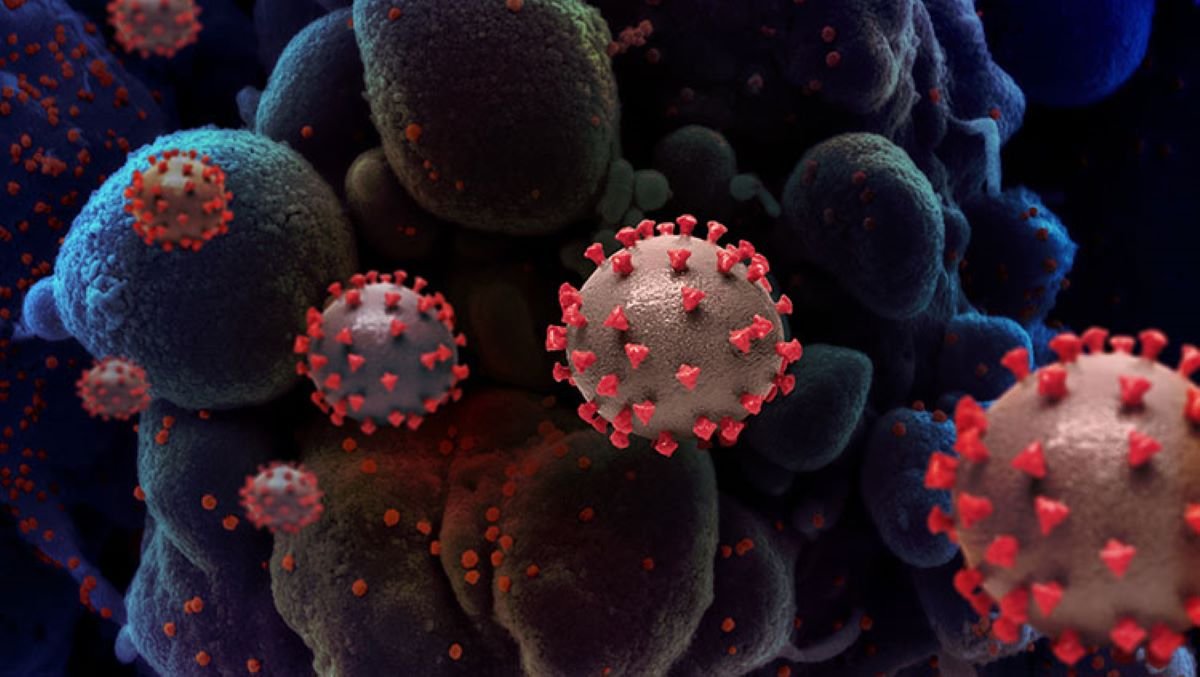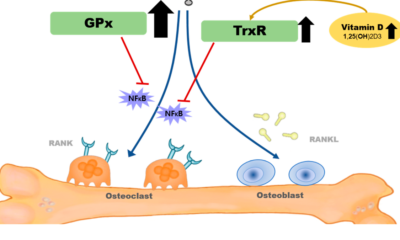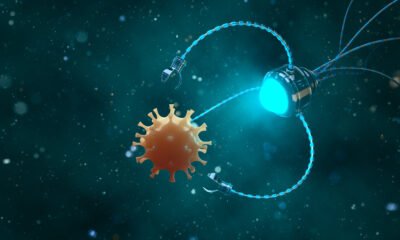Blog
Cutting-Edge Diagnostic Technology Handheld Device for Alzheimer’s and Parkinson’s Diseases

Innovations in Healthcare Diagnosing Alzheimer’s and Parkinson’s Diseases
The researchers conducted tests using in vitro samples from patients, demonstrating that the device’s accuracy is comparable to state-of-the-art testing methods. The team’s future plans involve expanding the scope of the biosensor to include testing on saliva and urine samples. Additionally, the device has the potential for modification to detect biomarkers for various other medical conditions.

Published on November 13, 2023, in the Proceedings of the National Academy of Science, the device relies on electrical rather than chemical detection. This approach, according to researchers, is not only easier to implement but also enhances accuracy.
Ratnesh Lal, a professor specializing in bioengineering, mechanical engineering, and materials science at the UC San Diego Jacobs School of Engineering, and one of the corresponding authors of the study, envisions that this portable diagnostic system could revolutionize testing scenarios, enabling at-home and point-of-care testing in clinics and nursing homes globally for neurodegenerative diseases.
With approximately 14 million Americans projected to suffer from Alzheimer’s Disease by 2060, and other neurodegenerative diseases, including Parkinson’s, on the rise, early detection is crucial. The current state-of-the-art testing methods for these diseases often involve invasive procedures such as spinal taps and imaging tests, making early detection challenging. This is particularly true for patients experiencing symptoms or facing difficulties accessing local hospitals or medical facilities.

Lal’s focus on understanding the causes of Alzheimer’s Disease led him to develop a test capable of non-invasively detecting biomarkers for Alzheimer’s (amyloid beta and tau peptides) and Parkinson’s (alpha-synuclein proteins) specifically from saliva and urine. The decision to rely on electrical rather than chemical detection was driven by its perceived ease of implementation and enhanced accuracy. Furthermore, Lal aimed to create a device that could wirelessly transmit test results to both the patient’s family and physicians, reflecting his commitment to improving the quality of life and saving lives.

To realize Lal’s vision, the researchers adapted a device originally designed during the COVID pandemic to detect proteins in the live SARS-CoV-2 virus, as reported in PNAS in 2022. This achievement was made possible through chip miniaturization and large-scale automation of biosensor manufacturing.
The device described in the 2023 PNAS study consists of a chip with a high-sensitivity transistor, utilizing a single-atom-thick graphene layer and three electrodes. These electrodes are connected to a battery, allowing the flow of electric current, with a gate electrode to control the amount of current flow. A single DNA strand, serving as a probe, is connected to the gate electrode and specifically binds to biomarkers such as amyloid beta, tau, or synuclein proteins. The change in current flow is used as a signal to detect these specific biomarkers.
Experiments with brain-derived amyloid proteins from deceased patients with Alzheimer’s and Parkinson’s demonstrated the biosensor’s ability to accurately detect specific biomarkers, comparable to existing state-of-the-art methods. The device exhibited robust performance even in the presence of other proteins in the samples. While detecting tau proteins proved more challenging, the device’s ability to examine three different biomarkers allowed for a reliable overall result.
FOR MORE INFORMATIVE AND RESEARCHED ARTICLES Enhancing Renal Function: A Revolutionary Approach with Axillary Mechanical Circulatory Support
The technology has been licensed to a biotechnology startup, Ampera Life, with Lal serving as the company’s chairman without financial support for his research from the company. The next phase involves testing blood plasma and cerebro-spinal fluid, followed by saliva and urine samples in hospital settings and nursing homes. Pending successful outcomes, Ampera Life plans to seek FDA approval for the device within the next five or six months, with the ultimate goal of bringing the device to market within a year.

Funding for this groundbreaking research was provided by the National Institutes of Health, the University of California San Diego, and the Chinese Academy of Sciences. The researchers utilized facilities associated with the NSF-funded UC San Diego Materials Research Science and Engineering Center.
Medical Sciences
The Nexus of Coronavirus and the Nervous System

The outbreak of Severe Acute Respiratory Syndrome coronavirus 2 (SARS-CoV-2) has ushered in the unprecedented COVID-19 pandemic. Understanding the virus and its effects on the body, particularly the nervous system, is crucial in navigating these challenging times.
Introduction: Unveiling SARS-CoV-2 and COVID-19

Coronaviruses, typically linked to mild respiratory illnesses like the common cold, took an unexpected turn with the emergence of SARS-CoV-2, causing the global spread of COVID-19. This disease showcases a diverse range of symptoms, from mild discomfort to severe respiratory distress.
Neurological Impacts Unraveling the Connection
Research underscores that neurological symptoms associated with COVID-19 likely stem from the body’s immune response rather than direct viral invasion. Comprehensive studies analyzing cerebrospinal fluid have revealed the presence of antibodies, offering insights into the intricate interplay between the virus and neurological complications.
Immediate Effects on the Nervous System A Closer Look

While a significant proportion of individuals infected with SARS-CoV-2 experience mild symptoms, those requiring hospitalization often face brain-related complications. These can manifest as muscle aches, headaches, and, in severe cases, seizures or strokes. Understanding these immediate effects is paramount in providing holistic care to COVID-19 patients.
Vascular Complications and Blood Clots A Silent Threat
The virus’s interaction with receptors on blood vessel cells presents a silent threat, leading to vessel weakening, leakage, and microbleeds in the brain. Moreover, COVID-19 induces blood clot formation, heightening the risks of strokes, heart attacks, and organ damage. Maintaining optimal oxygen levels becomes imperative in preventing cognitive disorders and other severe consequences.
Recovery and Long Term Effects The Road to Healing
While a majority recover within weeks, a subset of individuals grapple with prolonged dysfunction across various body systems. The term “long COVID” encapsulates persistent symptoms, such as fatigue, cognitive difficulties, and pain. Recognizing and addressing these lingering effects is essential for promoting the well-being of those affected and informing future healthcare strategies.
Connection to Neurological Disorders Assessing Risk Factors
Individuals with pre-existing neurological conditions may confront an elevated risk of severe illness from COVID-19. Understanding the virus’s impact on the immune system emphasizes the need for vigilance in monitoring potential long-term complications, including stroke, dementia, and muscle and nerve damage.
Striking a Delicate Balance Navigating Neurological Safety in the Realm of COVID-19 Vaccines

In the current landscape of uncertainty, the COVID-19 vaccination stands out as a crucial tool in the prevention of severe illness. While the general consensus is that vaccines are safe, it’s essential to acknowledge that isolated instances of Guillain-Barre Syndrome have been associated with specific vaccine formulations.
The continuous vigilance exercised by authoritative bodies such as the Centers for Disease Control and Prevention (CDC) and the Food and Drug Administration (FDA) plays a pivotal role. This ongoing monitoring ensures that timely updates on vaccine safety are provided, effectively managing the delicate balance between safeguarding health and addressing potential risks.
The benefits of vaccination and the potential risks associated with certain formulations underscores the importance of remaining informed. Individuals are encouraged to stay abreast of the latest information from trusted health organizations, enabling them to make informed decisions about their well-being in the ongoing fight against COVID-19.
FOR MORE INTERESTING ARTICLES Transforming Heart Failure Care: Unveiling Abbott’s ARIES Trial Breakthrough with Aspirin-Free HeartMate 3
Conclusion
In the ever-changing landscape of the COVID-19 scenario, maintaining a well-informed perspective on the virus’s effects on the nervous system is of utmost importance. Building a strong foundation for comprehension involves identifying and applying pertinent keywords linked to SARS-CoV-2, COVID-19, and related subjects.
Amid the persistent challenges presented by COVID-19 globally, having a profound understanding of the virus’s impact on the nervous system becomes a source of empowerment for individuals, enabling them to make wise decisions about their health. The collective effort of staying informed and adhering to recommended guidelines allows us to collectively navigate the uncharted territories of this pandemic, striving towards a future characterized by improved health and unwavering resilience.
Blog
Musical Fitness,The Surprising Secrets of Insights into the Daily Exercise Regimen of Songbirds” Vocal Exercise

Insights into the Daily Exercise Regimen of Songbirds
In the realm of ornithological research, a recent investigation has cast a revealing spotlight on the pivotal role of daily singing exercises for songbirds. This study not only delv es into the intricacies of how these routines impact the health of vocal muscles but also examines the consequential quality of the songs produced. Beyond the avian sphere, the findings carry profound implications for human vocal training and speech therapy.
RESOURCED ARTICLE New Insights on the Importance of Vocal Exercise for Songbirds

Conducted by an esteemed international team of researchers, the study brings to the forefront the imperative nature of regular vocal exercise for male songbirds. The strength and allure of their songs, it appears, hinge significantly on these daily vocal workouts. Singing, traditionally perceived as a form of communication or mere pastime, emerges as a cornerstone in the repertoire of male songbirds, playing a pivotal role in impressing potential mates, safeguarding territories, and nurturing social bonds within their communities.
A noteworthy revelation from the study is the rapid decline in vocal muscle strength observed when songbirds abstain from regular singing. In a surprisingly short span – a matter of days – these avian vocal muscles experience a significant weakening, with an astonishing loss of up to 50% of their strength. This underscores the crucial “use it or lose it” principle governing the vocal muscles of songbirds, a principle with implications reaching far beyond the avian world.

Female songbirds, according to the study, exhibit a distinct preference for songs performed by males committed to vocal exercise. A staggering 75% of female zebra finches, when given the choice, displayed a clear inclination towards the songs of well-exercised males. This observation suggests that the quality of a songbird’s vocal performance directly influences its desirability as a mate, adding a nuanced layer to the intricacies of avian courtship.
Additionally, the researchers shed light on the daily dawn chorus, a captivating phenomenon where birds engage in a collective morning serenade. Beyond its melodic charm, the dawn chorus appears to serve a crucial purpose – a mechanism for songbirds to exercise their vocal muscles. Regular participation in this communal singing ritual ensures that these muscles remain in optimal condition, preserving their appeal to potential mates.

An intriguing characteristic of songbird vocal muscles, distinct from human limb and body muscles, was unveiled during the study. Rather than gaining strength and slowing down with exercise, as is typical for humans, songbird vocal muscles become weaker and faster. This unexpected finding holds significant implications, not only for the understanding of avian physiology but also for the potential insights it offers into human speech therapy.
READ MORE SCIENTIFIC ARTICLE Decoding the Immune System, Unveiling the Intricacies of HLA Class II Molecules
In conclusion, this research provides invaluable insights into the significance of daily singing exercises for songbirds, illuminating the delicate balance between maintaining healthy vocal muscles and producing songs of enduring allure. Beyond the avian landscape, these findings resonate in the realm of human vocal training and therapy, emphasizing the necessity of regular vocal exercise for optimizing vocal performance and health
Blog
New research suggests plants might be able to absorb more CO2 from human activities than previously expected

Recent research, highlighted in Science Advances, suggests a more optimistic outlook for our planet’s ability to absorb carbon dioxide (CO2) from human activities. While this discovery is encouraging, it’s crucial to recognize that it doesn’t diminish the urgency of ongoing efforts to reduce carbon emissions. Planting trees and preserving existing vegetation, though beneficial, are not standalone solutions. This research underscores the multifaceted benefits of maintaining diverse forms of vegetation.
Dr. Jürgen Knauer, leading the research at the Hawkesbury Institute for the Environment, explains, “Plants play a vital role in absorbing a substantial amount of CO2 annually, mitigating the adverse effects of climate change. However, uncertainty has surrounded the extent to which they will continue this CO2 uptake in the future.”

The study introduces a climate model integral to global climate predictions, predicting a robust and sustained carbon uptake by plants until the end of the 21st century. This model considers critical physiological processes governing photosynthesis, such as CO2 movement efficiency within leaves, plant responses to temperature changes, and nutrient distribution in canopies.
CO2 and Beyond: Unraveling the Role of Plants in Carbon Sequestration
Photosynthesis, the transformative process converting CO2 into sugars, emerges as a natural climate change mitigator. This study delves into factors shaping a plant’s capacity to effectively sequester carbon, encompassing CO2 movement within leaves, plant responses to temperature fluctuations, and nutrient distribution in canopies.
Understanding the Climate Model
The climate model used is pivotal for global climate predictions, integrating various factors to simulate the Earth’s climate. Dr. Knauer emphasizes the significance of incorporating plant physiological processes into the model: “We accounted for the efficiency of CO2 movement within leaves, plant responses to temperature changes, and nutrient distribution in canopies. These often-overlooked mechanisms impact a plant’s ability to ‘fix’ carbon.”
Photosynthesis as a Climate Change Mitigator

At the core is photosynthesis, allowing plants to convert sunlight into energy, absorb CO2, and release oxygen. The carbon-fixing aspect acts as a natural climate change mitigator, contributing to the expansion of the land carbon sink.
Also Read: Research Global Impact and Initiative
Projecting into the Future High-Emission Climate Scenarios
The study challenges assumptions about the effects of intense climate change on terrestrial ecosystems. Focused on a high-emission climate scenario, it suggests a robust and sustained increase in vegetation carbon uptake until the end of the 21st century. This challenges the notion that intense climate change would inevitably weaken the ability of plants to sequester carbon effectively.
Integrating Complexity into Climate Models
Silvia Caldararu, Assistant Professor in Trinity’s School of Natural Sciences, emphasizes the importance of recognizing biology’s role in climate models. Current models may underestimate climate change effects on vegetation due to overlooking critical physiological mechanisms.
Caldararu notes, “These predictions have implications for nature-based solutions like reforestation and afforestation. Our findings suggest these approaches could have a larger impact in mitigating climate change than thought. However, planting trees alone won’t solve all problems. Emissions reduction across all sectors remains imperative.”
Nature-Based Solutions: Reforestation and Afforestation
The research’s practical implications extend to nature-based solutions. Reforestation and afforestation, crucial for restoring ecosystems and creating carbon sinks, could have a more substantial impact on mitigating climate change than initially thought.
Recognizing the Interconnectedness of Climate Solutions
A holistic approach is crucial, combining nature-based solutions with emissions reduction efforts. The study prompts reconsideration of climate solutions’ interconnectedness, underscoring the need for multifaceted approaches.
Conclusion: Plants as Allies in the Fight Against Climate Change
In conclusion, the research highlights plants’ potential to absorb more CO2, offering new avenues for addressing climate change. Reforestation, afforestation, and enhanced understanding of plant physiology provide valuable tools in the broader framework of climate change mitigation.
As we navigate the intricate web of interactions between plants, climate, and human activities, a comprehensive and integrated approach is essential. Recognizing biology’s role in climate models, understanding photosynthesis dynamics, and embracing nature-based solutions are steps toward a more sustainable future.
Ultimately, the research emphasizes that plants are active allies, not passive bystanders, in the climate change narrative. By unraveling their role in carbon sequestration, we gain insights for more effective strategies to address the urgent challenges of a changing climate. A harmonious partnership with the natural world, acknowledging plants’ vital role, is crucial for a sustainable future.
-

 Medical Sciences8 months ago
Medical Sciences8 months agoSelenium Nanoparticles Redefining Postmenopausal Osteoporosis Treatment with a Novel Approach
-

 Medical Sciences8 months ago
Medical Sciences8 months agoTransforming Heart Failure Care: Unveiling Abbott’s ARIES Trial Breakthrough with Aspirin-Free HeartMate 3
-

 Medical Sciences7 months ago
Medical Sciences7 months agoNanodrones Against Cancer,UNIST’s Innovation Marks a New Era in Treatment
-

 Medical Sciences8 months ago
Medical Sciences8 months agoGeriatric Care in the Face of Non-ST Elevated Myocardial Infarction and Acute Coronary Syndrome
-

 Blog8 months ago
Blog8 months agoUK’s Milestone In Genetic Medicine,CRISPR Therapy Treating Sickle-Cell Disease and β-Thalassaemia
-

 Medical Research8 months ago
Medical Research8 months agoA New Chapter in Vision Restoration By Rebuilding Retinal Ganglion Cells
-

 Medical Sciences8 months ago
Medical Sciences8 months agoRegenerative Surgery A Comprehensive Innovation by Stem Cells in Face and Eye Transplantation
-

 Blog8 months ago
Blog8 months agoNewborn Hearing Screening Can Improve Reading Proficiency Skills
